August 28, 2022
We’ve said it before, but we really try to avoid campgrounds, especially on weekends. Even though we were at the quiet end of the campground, a party with music kept up until after 2 am. I told myself that we probably wouldn’t have slept well anyway because of how light it was during much of the night.
After leaving the campground, we started looking for gas in the nearby town of Inuvik. We still had almost half a tank but it’s definitely smart to fill up whenever possible in remote areas like this. Inuvik is the only place to get fuel before reaching the tiny town of Tuktoyaktuk (known locally as “Tuk”) where the road ends at the Arctic Ocean. But it was a Sunday morning and it turned out that none of the three gas stations in Inuvik were open so we had little choice but to hope the gas station in Tuk would be open. Inuvik is also where the Dempster Highway ended and the Inuvik-Tuktoyaktuk Highway began, continuing the relentless trek north to the Arctic Ocean, another three hours away.
It was gray, cold, and drizzling on and off as we headed up the last 90 miles of dirt road to the ocean. The road to Tuk had been completed only five years before and we hoped it would be in better shape than the Dempster. Unfortunately, it soon became apparent that it was narrower and not as well maintained. But it was beautiful in its own way, like the Dempster had been.
There was more water than land as the road swept around hundreds of small lakes, bringing us closer to the ocean. We saw tundra swans and ducks and once heard loons calling when we stopped. We were only a few feet above sea level now as we wound our way past the water and approached Tuk.
After passing large piles of trash alongside the road on the outskirts of town, we threaded our way through the tiny First Nation seaside village of Tuk (pop. 1,400).
We walked over to the water, just a few steps from where we parked, took off our shoes and stuck our feet into the frigid water. We’d now been to the Atlantic, Pacific and Arctic Oceans with only two more for us to visit, the Indian and Southern (Antarctic) oceans. Stay tuned – the Southern Ocean is coming up!
After, we found a picnic table where we made coffee and I had a very cold breakfast. But we didn’t care as we took in the sweeping view of cold gray ocean.
It was hard to imagine how brutally cold it would be here in a month or two when the sea froze over. A few locals were fishing and some kids rode by on old bicycles, chattering like kids do everywhere, oblivious to the wind chill. A couple other hardy travelers like us arrived in their rigs, all too excited to chat.
Eventually, we headed into the small town to check it out. Most buildings were placed haphazardly with aesthetics largely taking a backseat to function. All were on pilings; otherwise, the buildings would heat the ice underneath and they would sink into the permafrost. Few people were out and most stores were closed. It was summer but the town was built for long, harsh, dark winters, not visitors. Low clouds and endless wind made it feel uninviting.
Before leaving town, we searched for gas. Fortunately, there was a single open station with gas for $US 7 a gallon where we gladly filled up not knowing when we’d find more. We were grateful again for the truck’s 32-gallon gas tank, knowing that something as simple as a fuel delivery truck breakdown could leave us stranded for days.
Snow machines far outnumbered cars both in Tuk and along the road, where we repeatedly saw snow mobiles and sleds scattered. Our impression was that locals simply left them wherever it was convenient.
As we headed out of town in the early afternoon, we went by the Pingo Canadian Landmark. A pingo is a large periglacial earthen mound with an ice core. Tuk is known for having one of the highest concentrations of pingos on earth. Some 1350 pingos dot the coastline nearby. The largest, Ibyuk Pingo, is 16 stories high and easily visible on the flat coastal plain. Pingos form when water and soil on top of permafrost freezes and expands, pushing the soil up. They grow slowly, taking centuries to form.
Our drive for the next few days would be a long trip, beginning with a return to Inuvik along the Inuvik-Tuktoyaktuk Highway. We stopped in Inuvik, once again hoping to find an open gas station to top off the tank we’d filled a few hours before. Fortunately, this time one of the gas stations was open.
Afterwards, we briefly checked out the town and were underwhelmed. The town was obviously poor and rundown, but about what we expected that in a place this remote where everything is frozen for most of the year and supplies are hard to come by. What we didn’t anticipate was the unhelpfulness. While shopping in a grocery store (with US$9 small jars of jam!), we needed a restroom but when we asked at the store, and a few others after, we either were ignored or sent away. We’ve been in some of the poorest villages imaginable, but the people have universally been friendly and helpful. Perhaps, we thought, the coming dark winter coupled with dealing with Covid had left the locals indifferent to outsiders’ needs. We finally found a port-a-potty at a local park.
The biggest (perhaps only) attraction in Inuvik was igloo-shaped Our Lady of Victory Catholic Church, built in the 1950s. The church was designed by a Catholic missionary who had training as a carpenter but no formal architectural skills. His design mitigated possible structural damage that might be caused by frost heaves and was the only major building in town not built on pilings.
Leaving Inuvik around 3:30 pm, we began the 458-mile trip back down the Dempster. Though the return was along the same (and only) road, the views were somewhat different heading southbound. Today, we had at least seven more hours of daylight left and decided to drive as far as possible.
About an hour later, we stopped briefly to help out a broken-down camper. We’d anticipated seeing way more breakdowns and had some tools and a few repair items to help if needed, but until then had seen only their remains scattered on the sides of the road. The driver told us he had a flat—his second one in less than thirty minutes! From what we’d heard, flats were inevitable on the Dempster but so far so good for us. We’d brought only one spare, though we’d been advised to bring two, but our tires had already been tested in other equally rough places (Baja Mexico, for example) and we were confident. Plus we had a repair kit and compressor.
Mile after mile we drove, eventually crossing back over the Arctic Circle and then again into the Yukon Territory. We decided to try to reach the same scenic boondocking spot about midway along the Dempster if we could make it there by dark. Before we could go that far, we needed to make another fuel stop at the same (and only) gas station near the Dempster’s midpoint.
We arrived at the station at about 7:45 pm, unaware that it was about to close at 8:00. We just made it!If we’d arrived later at the station, we’d have probably had to camp in the adjacent parking lot.
Around 9:00 pm, a heavy fog fell over the valley. Luckily, our camping spot was only another half hour farther.
After our long day reaching and returning from the Arctic Ocean, we finally were back at our campsite. We made dinner then watched the sun drop behind the clouds as it sort-of set over the distant mountains.

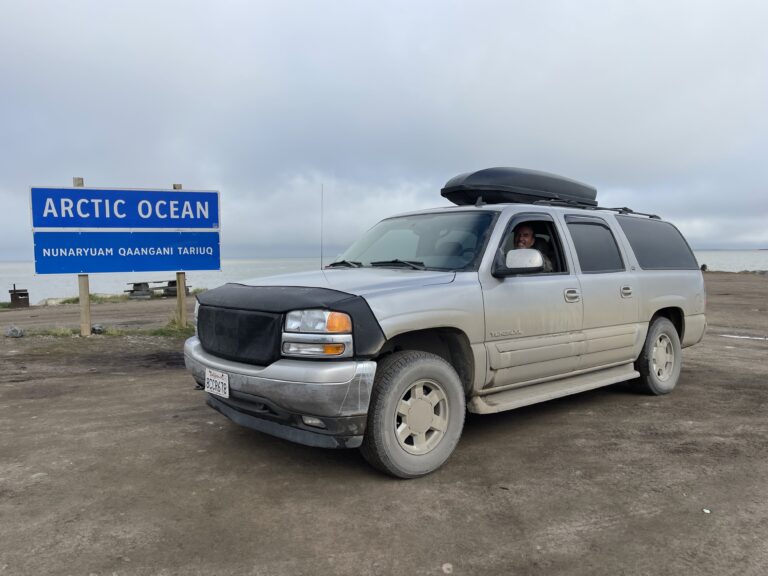
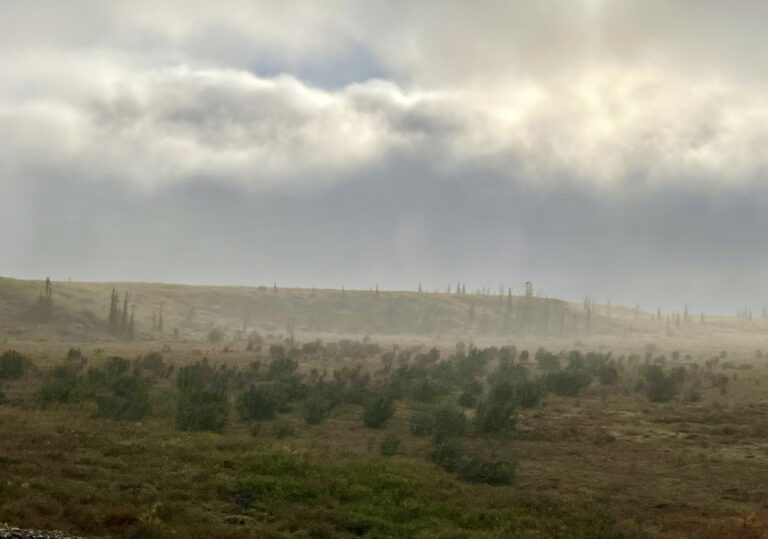
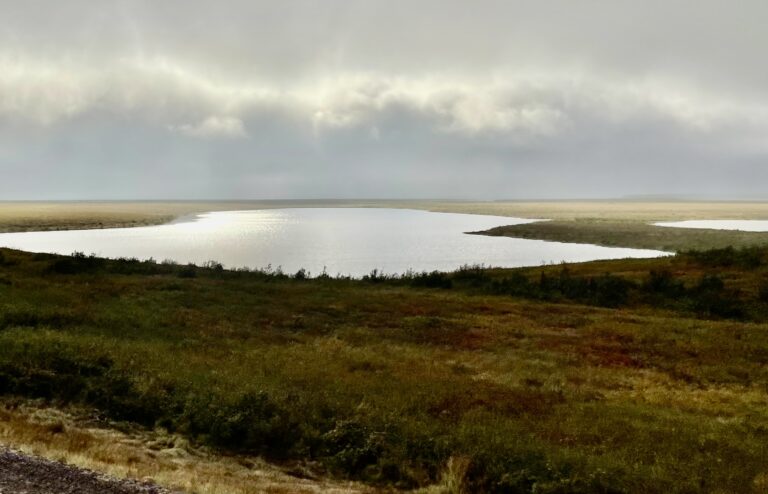
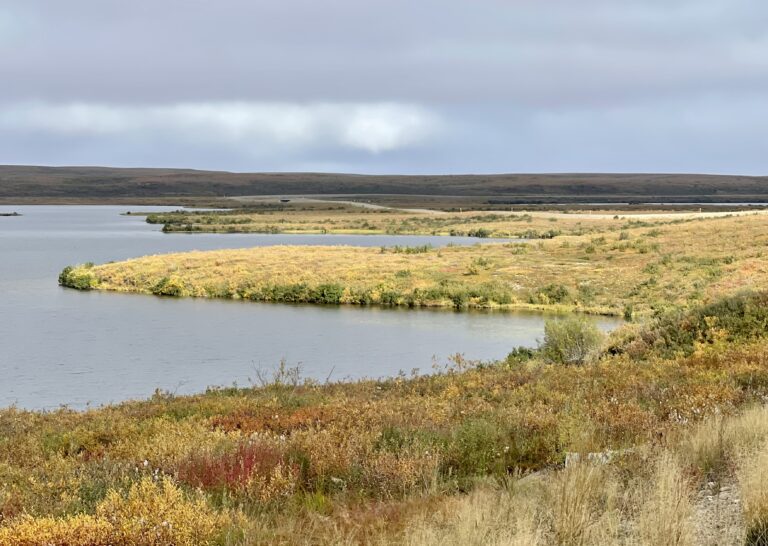
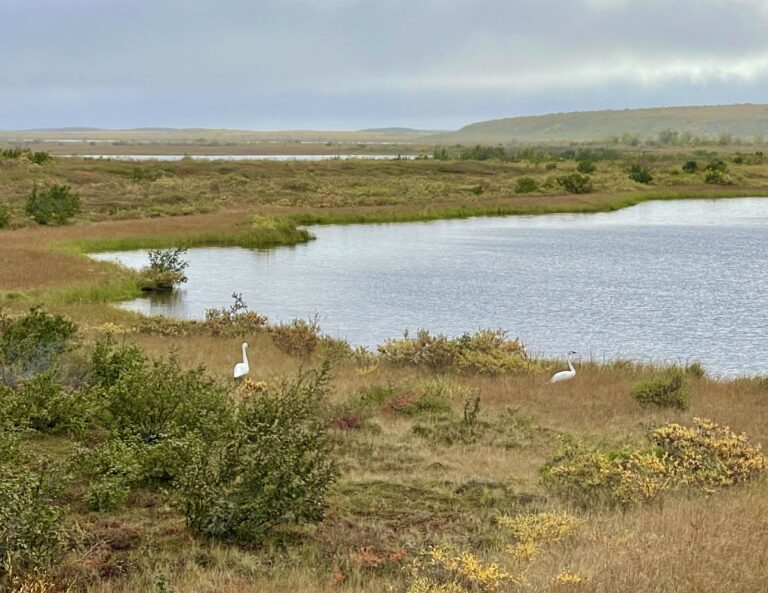
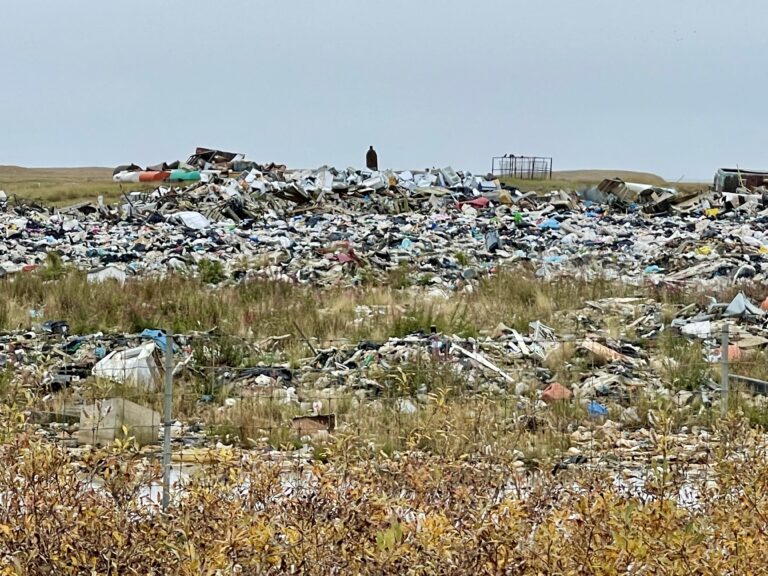
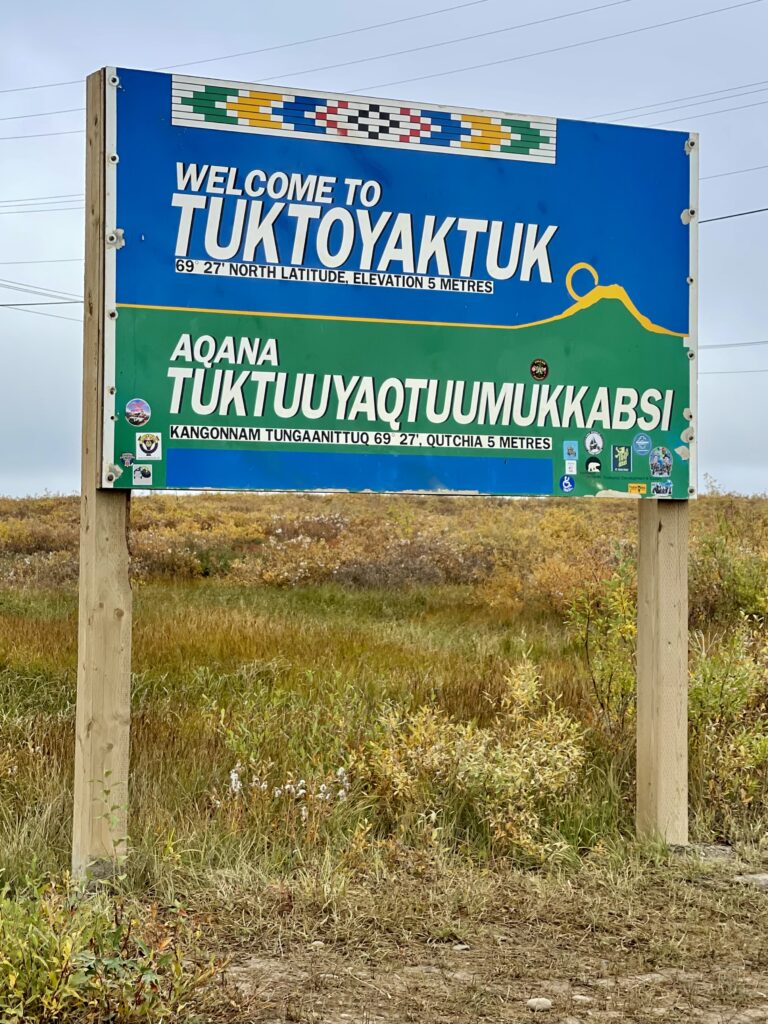
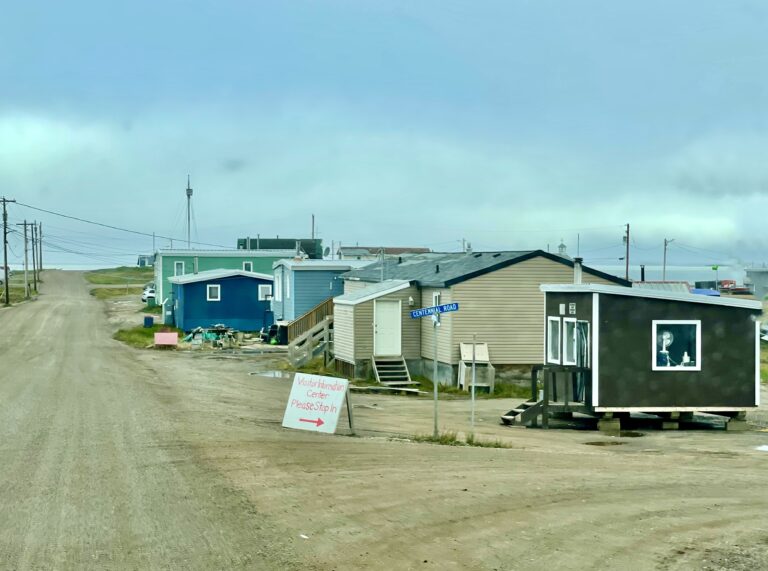
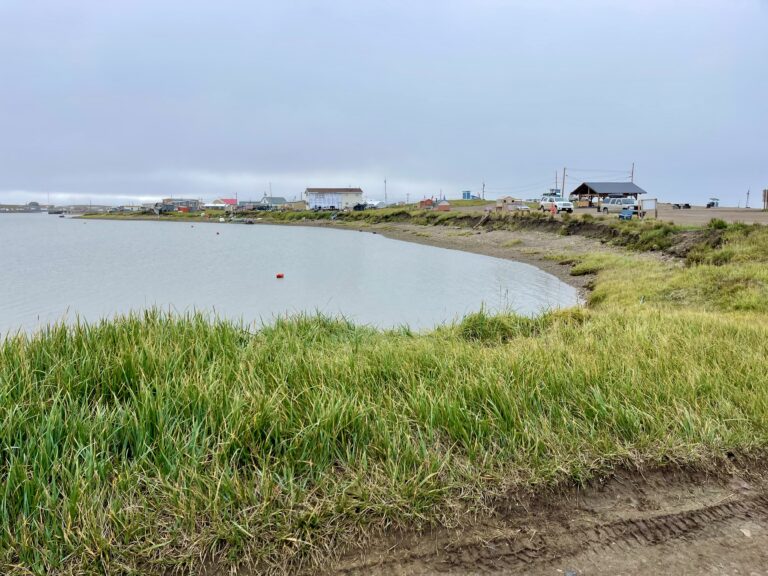
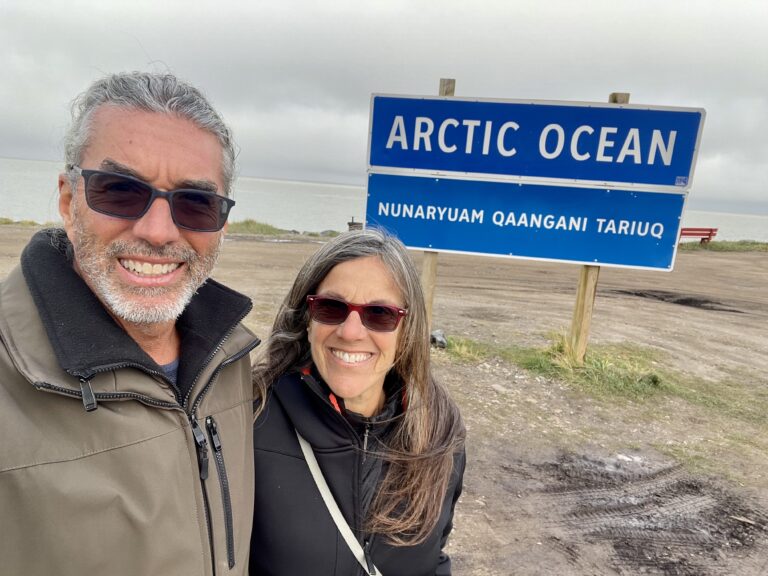
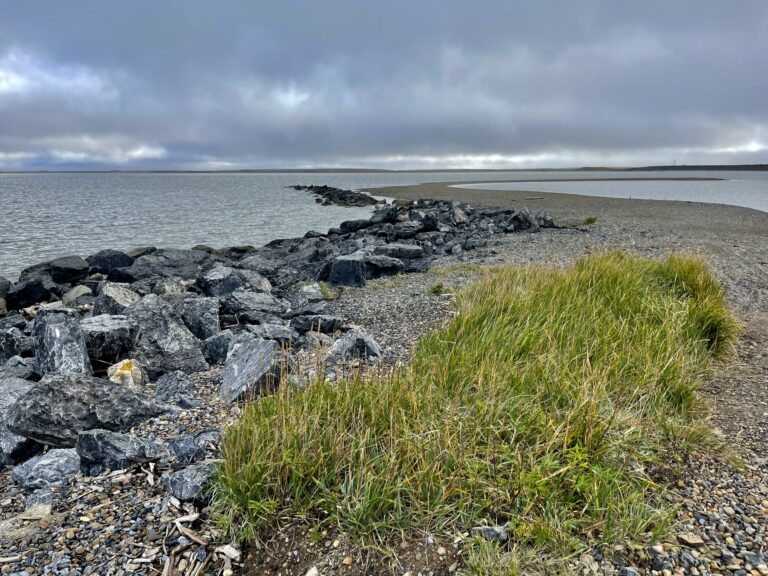
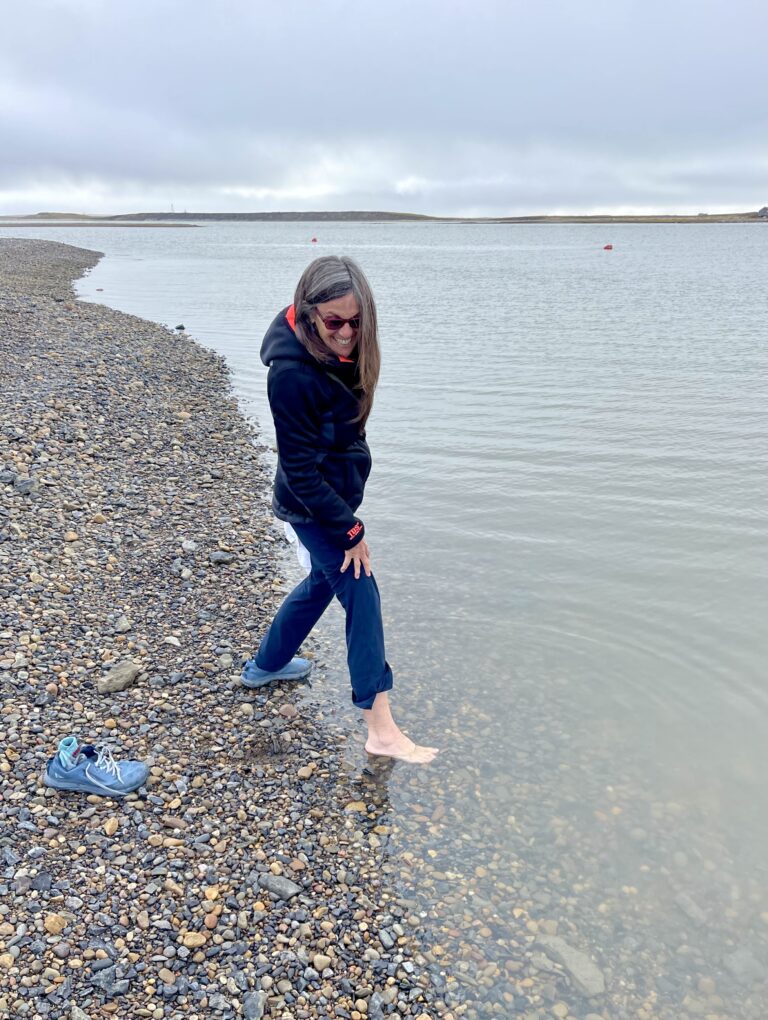
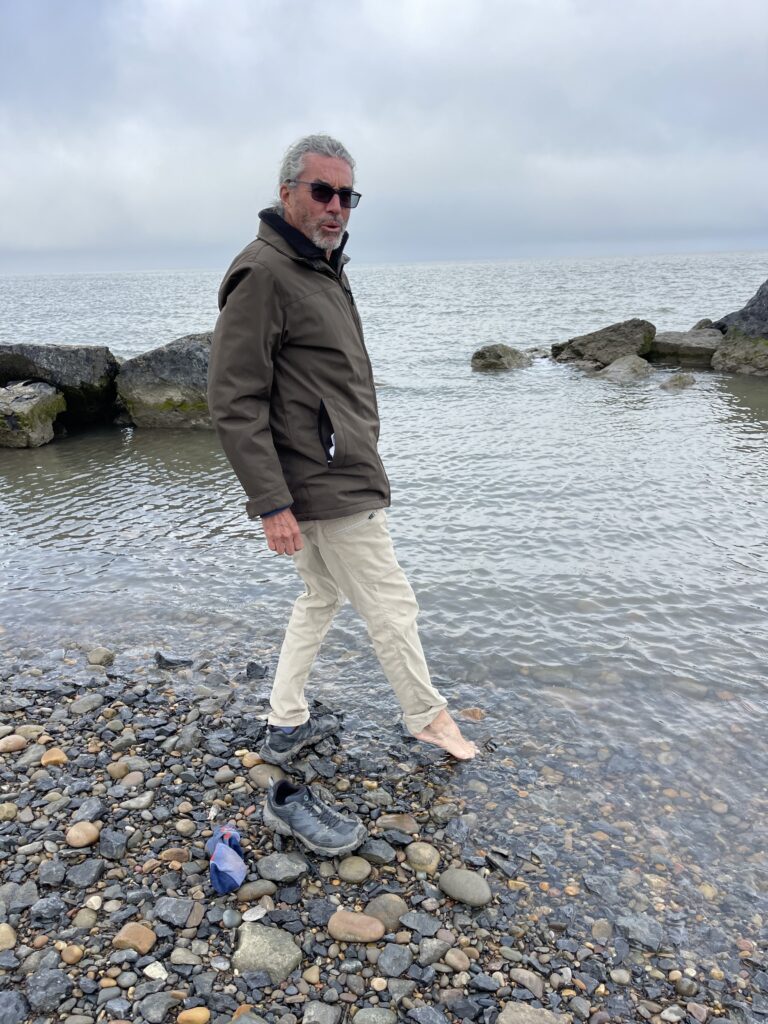
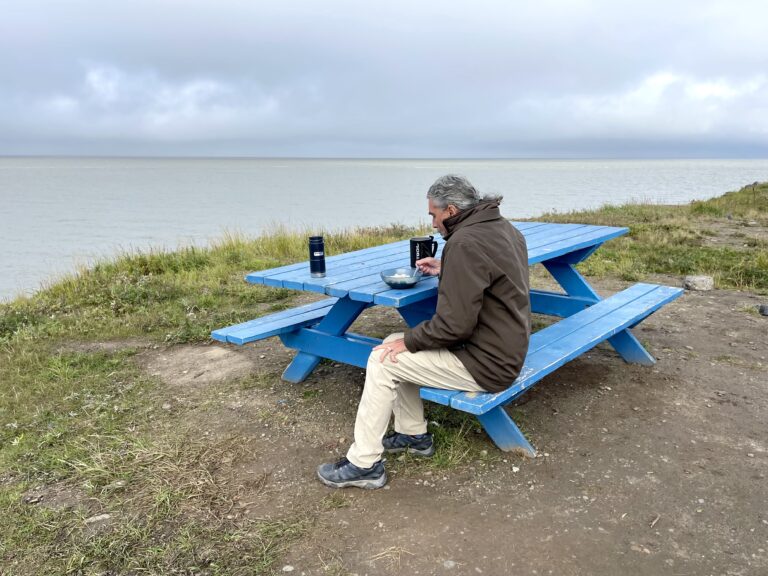
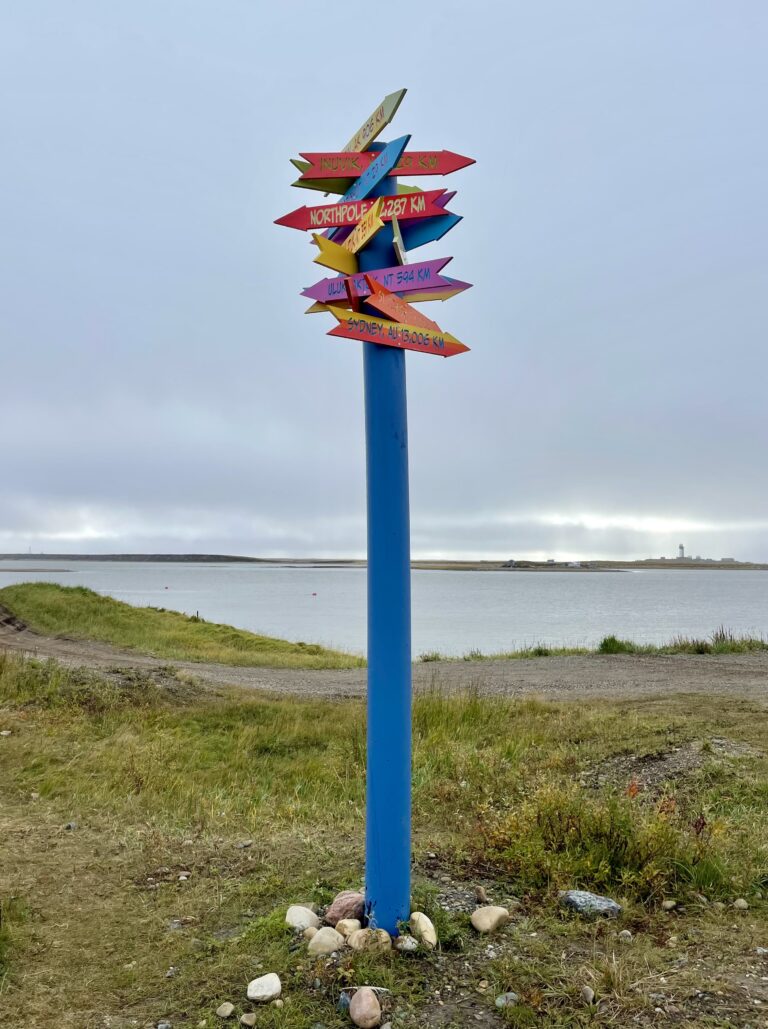
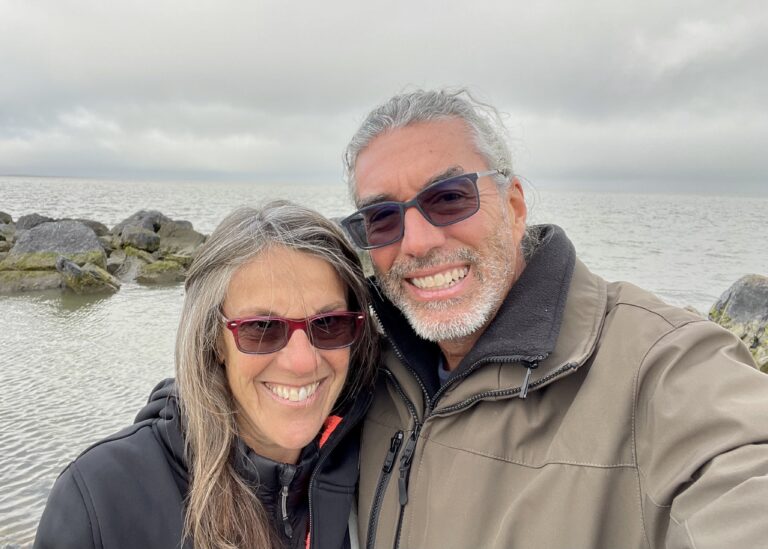
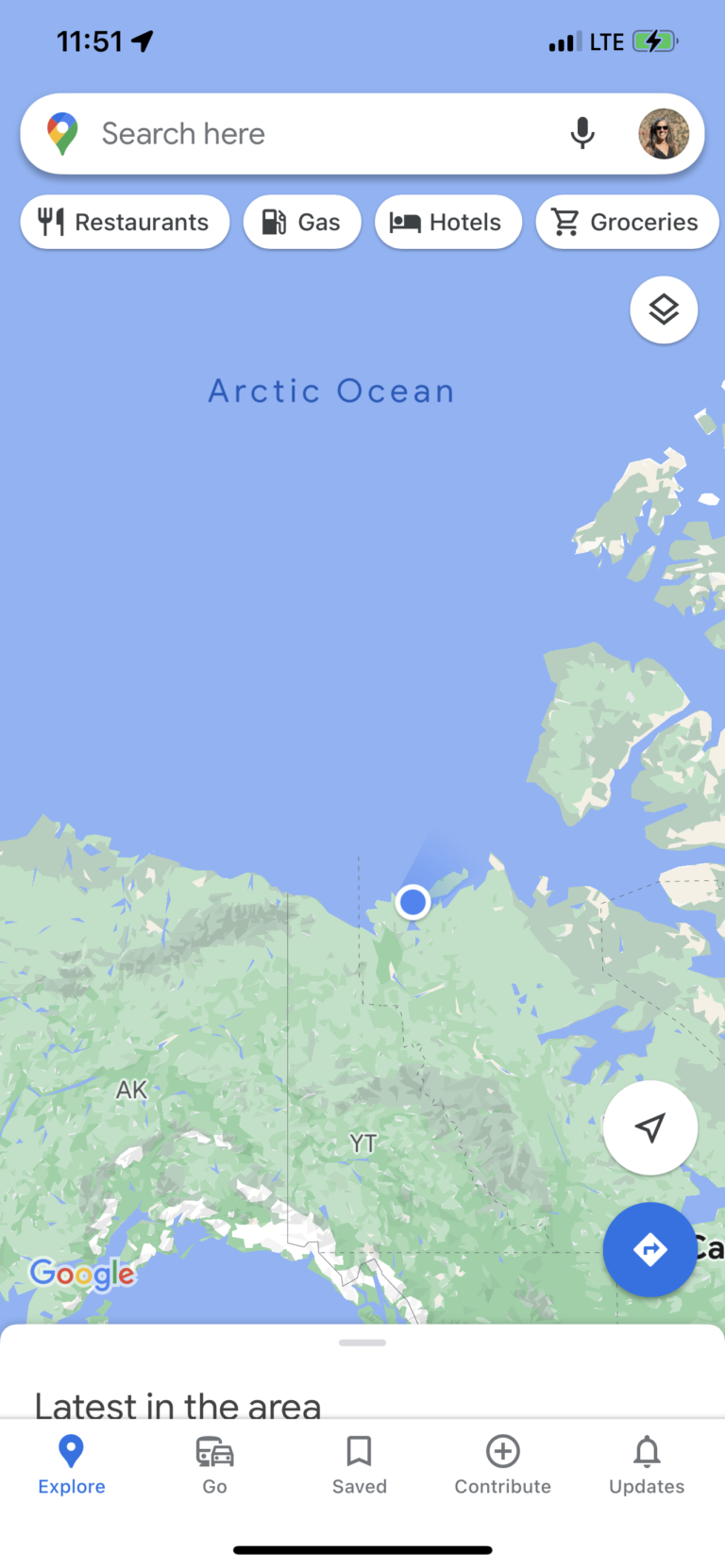
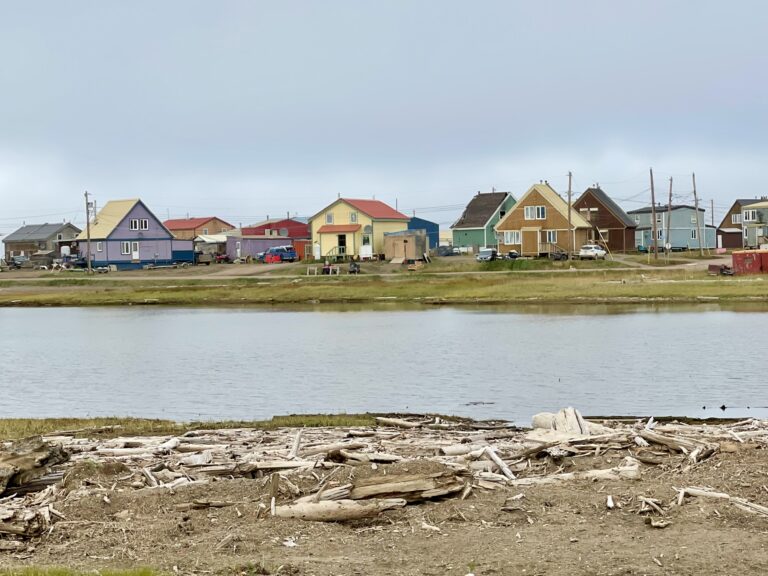
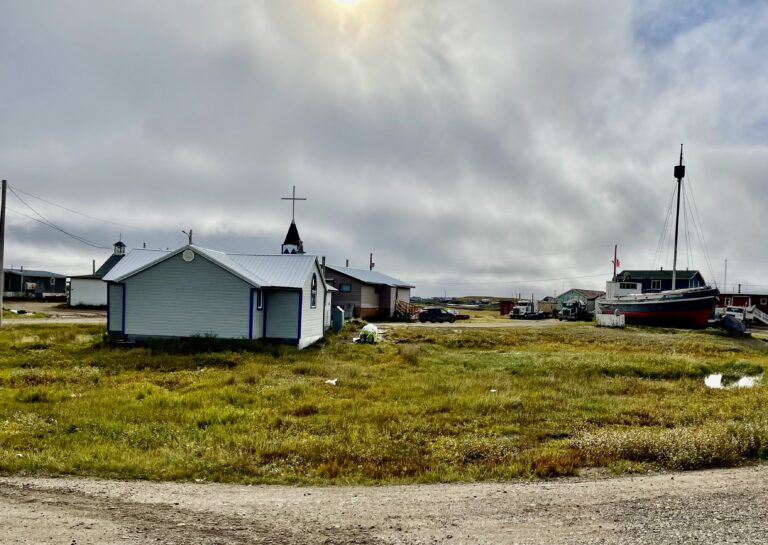
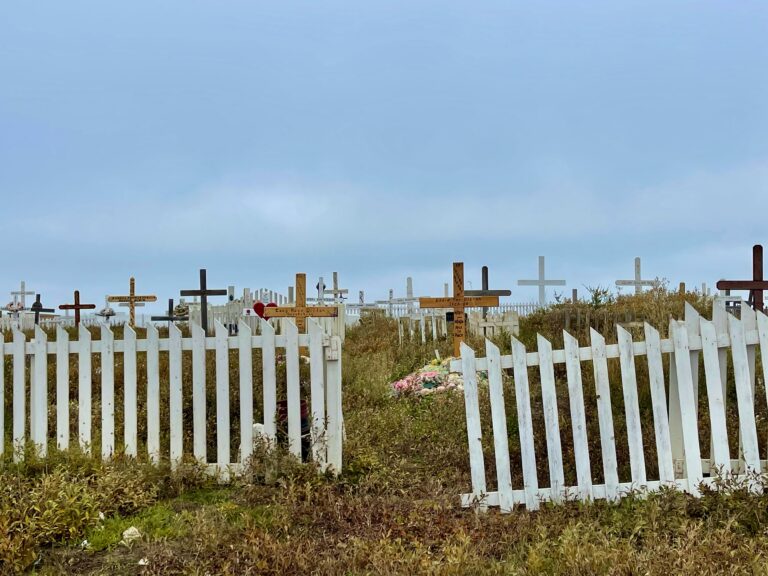
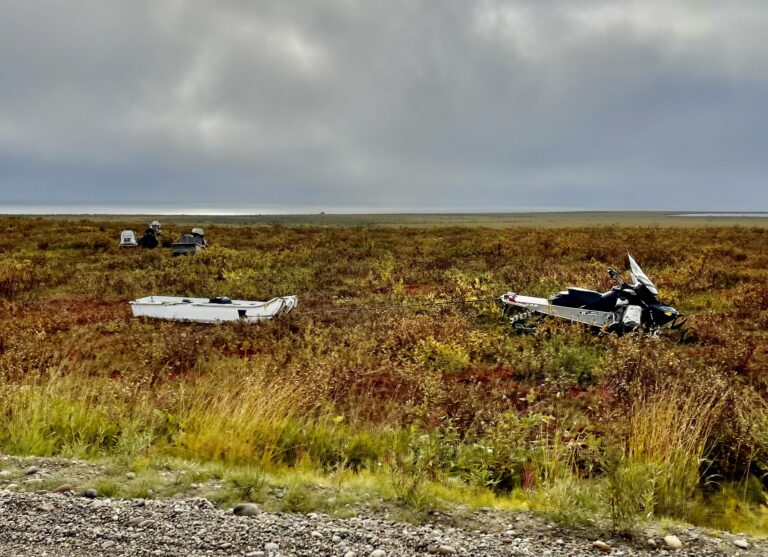
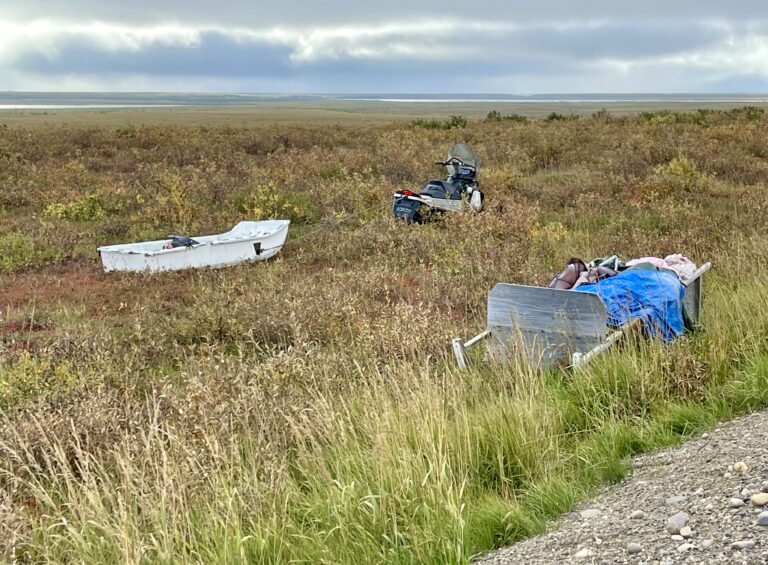
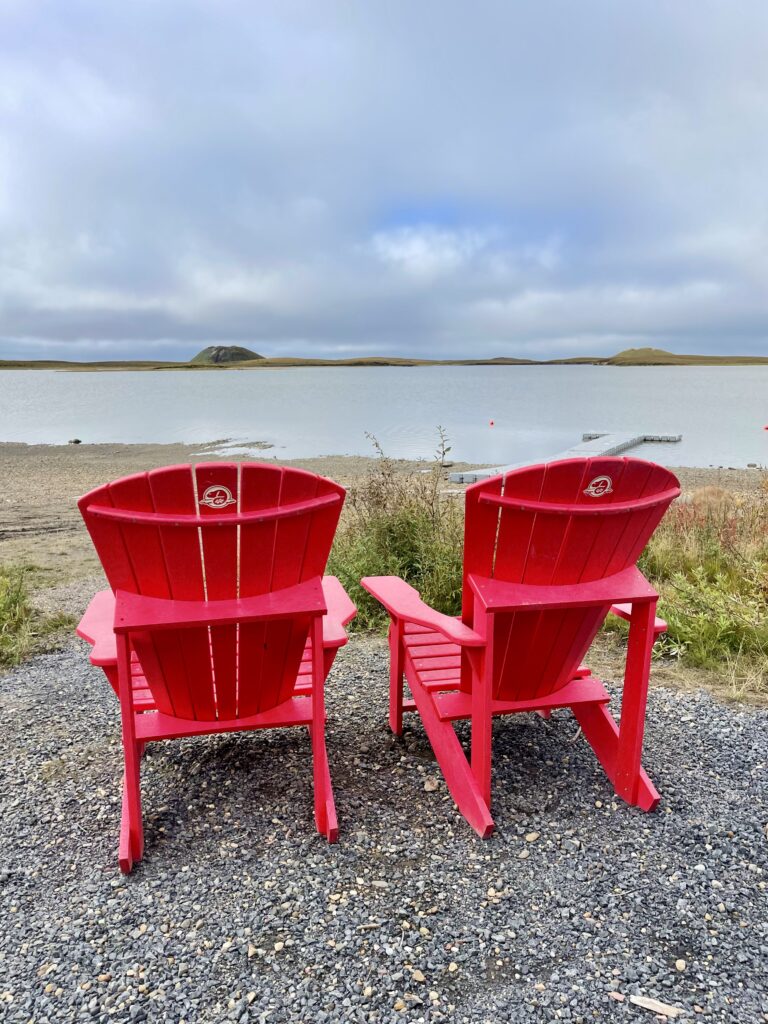
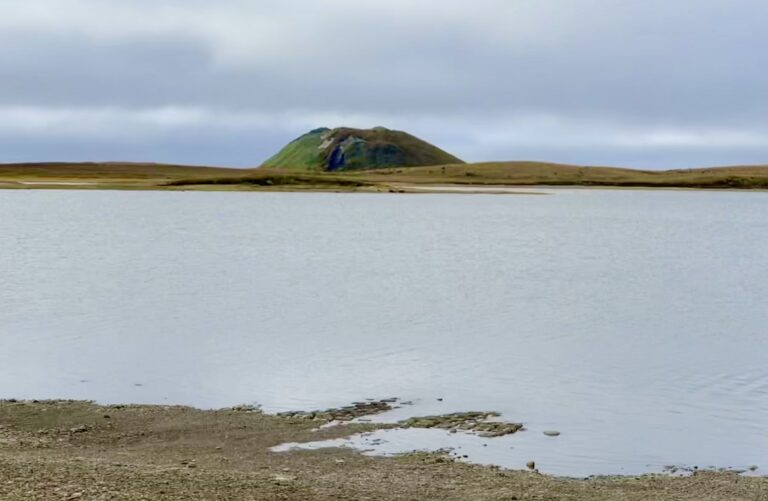
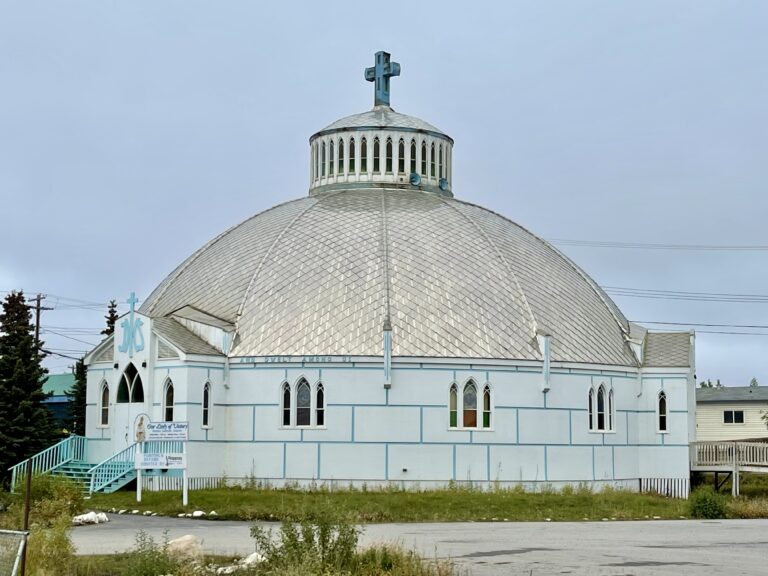
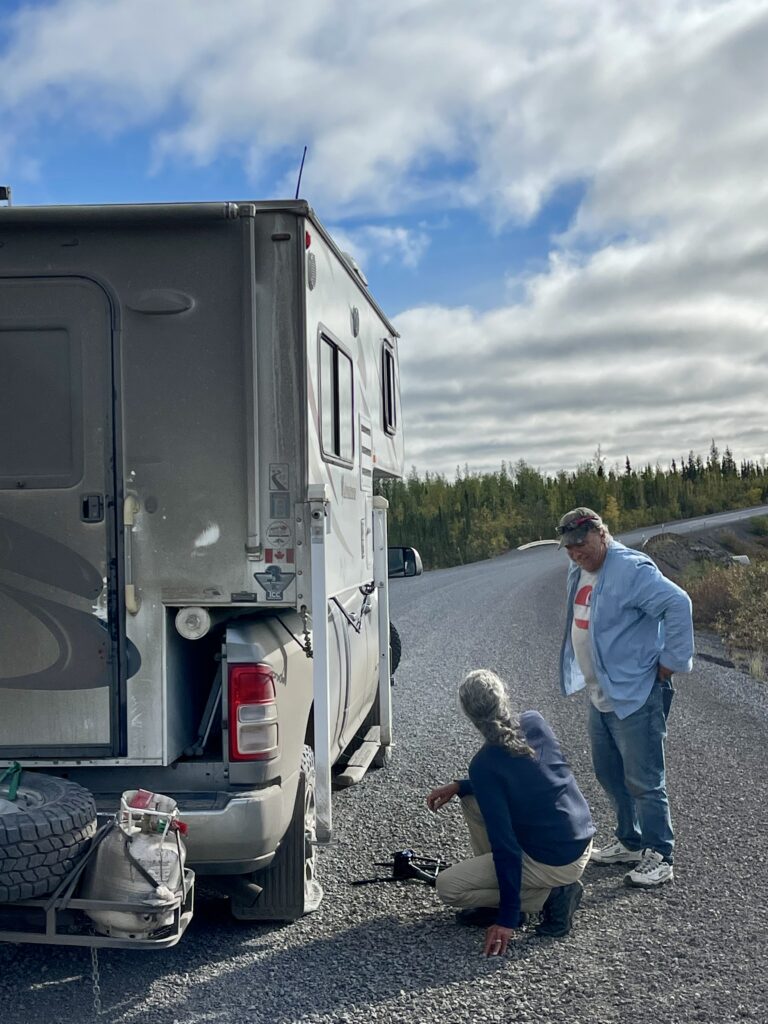
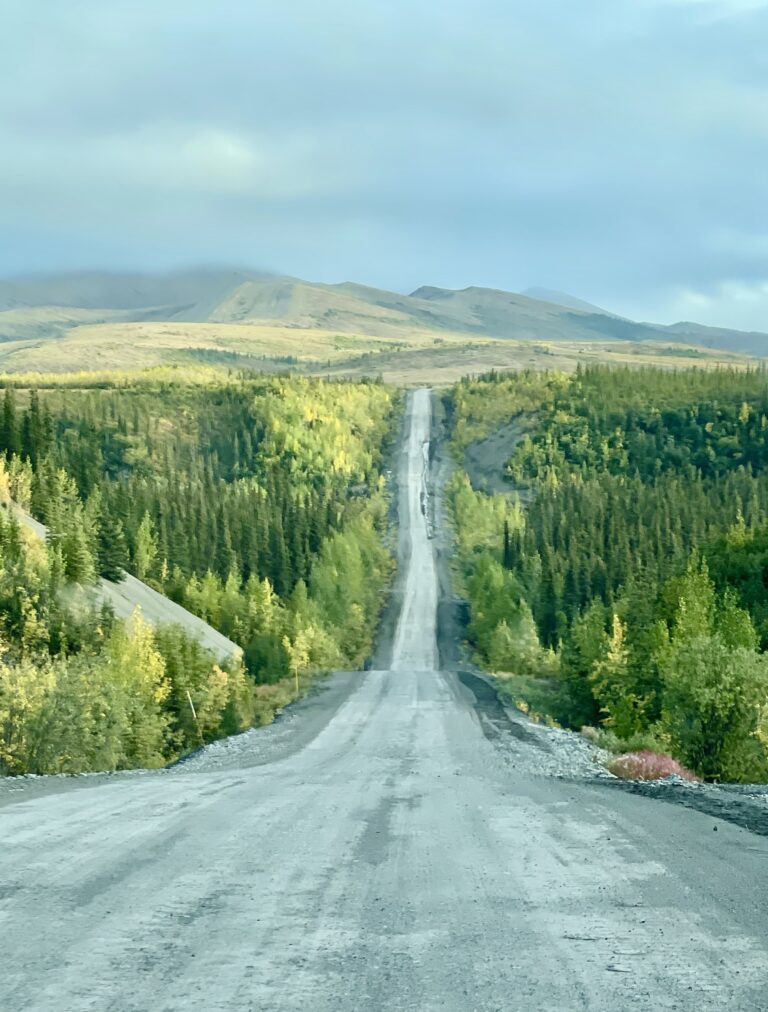
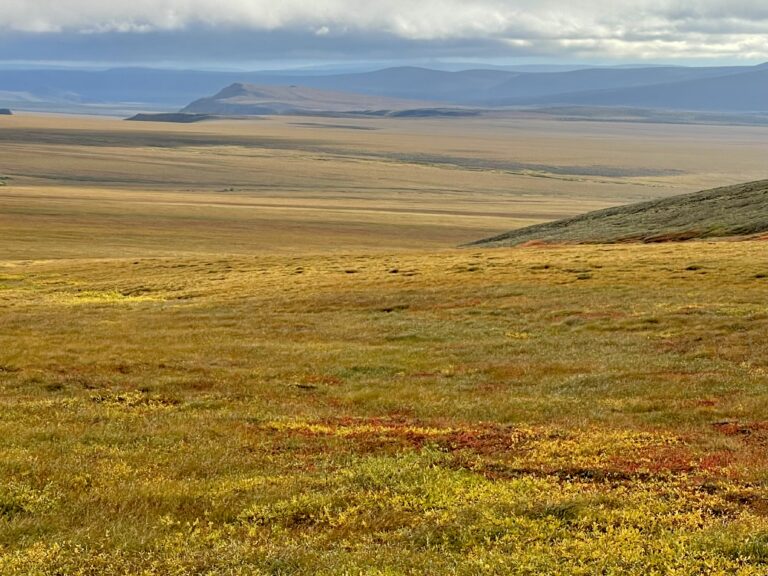
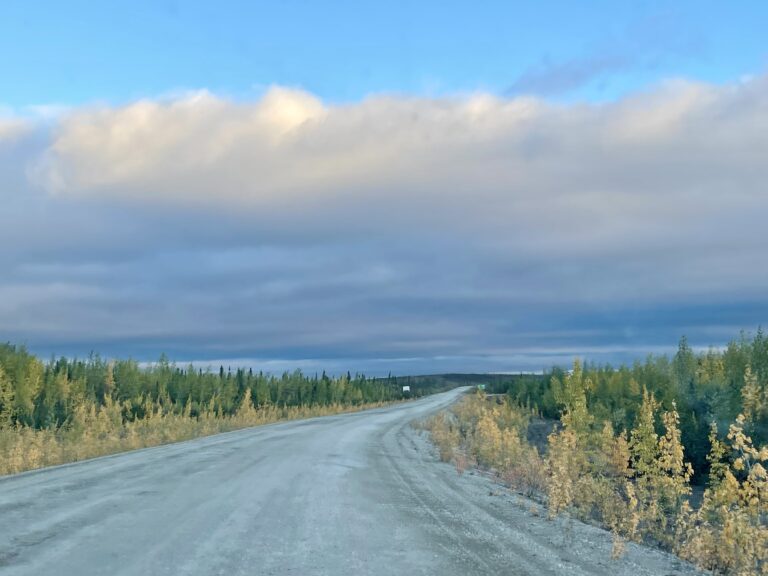
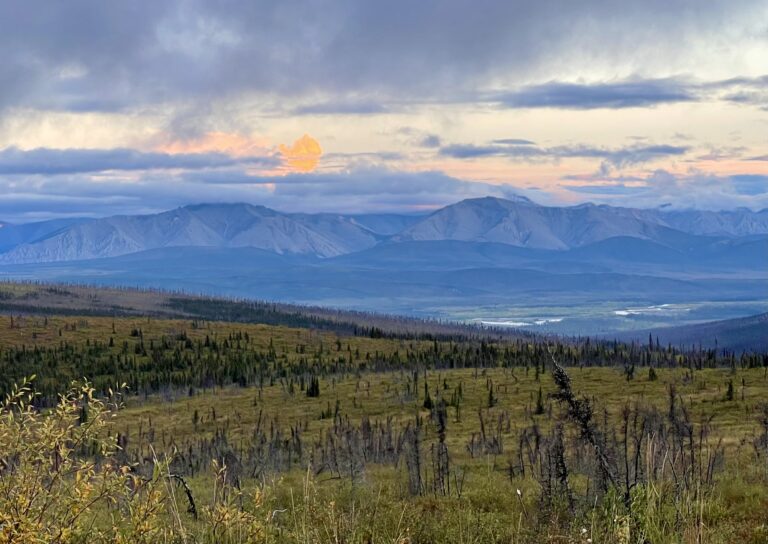
One Response
Thank you. I’m getting through this great story. Wonderful photos. Good for ya! Happy New Year from Claire W.